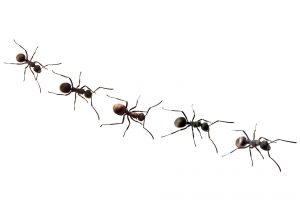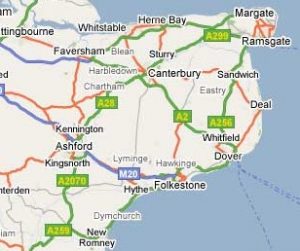Ants
Professionals In Ant Control In Kent
If you have an ANT problem CALL SPOTLIGHT PEST CONTROL SERVICES : 07715 211899
Using experience and knowledge, our qualified technicians will provide a fast solution to your ant problem.
COVERING: HYTHE.ROMNEY MARSH.FOLKESTONE.DOVER.DEAL.CANTERBURY.ASHFORD AND SURROUNDING AREAS IN KENT.

ANTS
Part of the order hymenoptera and follow a complete metamorphosis with distinct egg, larval, pupal and adult stages. They have developed quite complex social structures.
Here are some that are important as pests;
Black Garden Ant (Lasius Niger)
It is shiny black in colour and about 2-3mm long. It forms it’s nests in gardens, under paving stones, foundations or occasionally in buildings. They have one queen per nest and eat a wide range of foods. Particularly liking sweet substances including aphid secretions(honey dew). They guard aphid’s that damage plants.
It is in late summer that swarming appears when many nests emerge at the same time. They mate on the wing but is only a small proportion of females that survive to form new colonies. If new colonies are found in close proximity then if they join up one of the dominant females will kill the other and assume dominance. They are not known as dirty insects but their foraging can lead them to walk onto unsavoury surfaces so when they enter buildings this can be considered unacceptable.
The Invasive Garden Ant (Lasius Neglectus)
It is very similar to the back garden ant and can be over looked, hence the name ‘neglectus‘. Slightly smaller and paler brown in colour and found as far apart as Yorkshire to East Sussex. Unlike the garden ant this ant can have multiple queen’s per nest and many nests per colony. They are highly successful in farming honey dew from other insects therefore aphids tend to increase dramatically as they receive protection from these ants against ladybirds and other insects.
They readily invade buildings but are quite happy to live under paving slabs, wall cavities, plug sockets and electrical goods. A build up of these ants can lead to damaging electrical equipment.
In late summer when ants disperse to form new colonies, the queen’s of this species don’t generally fly.Instead they usually form new colonies through a process called budding. One of the queen’s will wander off with a few workers to form a new colony which means that through natural movement they only move a few metres a year.
TROPICAL SPECIES found in the UK;
Pharaoh’s Ant (Monomorium Pharaonis)
Up to 2mm in length and a pale straw colour with a darker head and abdomen. Only found in heated buildings in the UK. Forms large unstructured nests in cavities and heating ducts. It has many queen’s per nest and it forms new colonies by budding to form satellite colonies.
Their minimum breeding temperature is 18 degrees c. They are usually associated with central heating systems and institutions such as hospitals, prisons and increasingly high rise apartment dwellings. They search out water which brings them into contact with drains and waste food collection bins. With their small size and ability to chew through things they can be responsible for transmitting disease from dirty unsavoury situations to clean food. They have a particular liking for the suppurating wounds of patients in hospitals.
Ghost Ant (Tapinoma Melanocephalum)
It is up to 1.5mm in length has a dark brown/black head and pale whitish abdomen. In the UK it is only found in heated buildings. It is very fast moving, forms large nests in cavities and heating ducts, also in the soil of potted plants. In the UK it is predominantly found in heated multiple occupancy dwellings, institutions and hospitals, though it is not as common as the pharaoh ant. Colonies require temperatures above 18 degrees c. They require access to water and are particularly difficult to eradicate when well established.
Roger’s Ant (Hypoponera Puncttatissima)
2-3mm in length and are dark yellow brown, shiny and densely hairy. In the UK it is normally found in heated premises. Though consequently have been found in conservatories, bakeries and hotels. Above all, they have a high requirement for moisture, therefore being frequently attracted to drains, toilets and other wet areas.
Live in small colonies and are carnivorous as well as also stinging humans. Important to note they feed exclusively on live bait therefore not attracted to poison baits.
.

